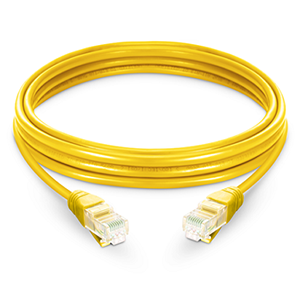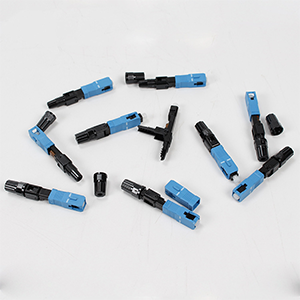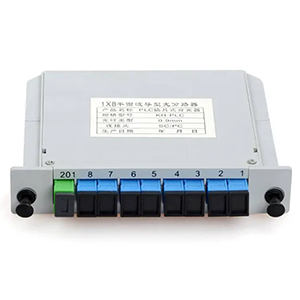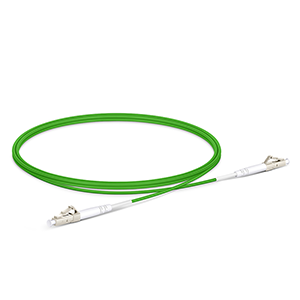Hello everyone! CAT5e Ethernet cable has become the standard choice in network construction due to its excellent transmission performance and wide range of applications. However, did you know that the maximum transmission distance of CAT5e cable is crucial to the performance of the entire network? Today I am happy to explain in detail the key impact of CAT5e cable length limit on network transmission quality. By fully understanding the importance of CAT5e cable length, I believe you will be able to choose the best cable length solution based on actual needs, thereby ensuring stable and efficient operation of the network and injecting strong power into your digital transformation.
Overview of CAT5e Ethernet Cable
Let me give you an overview of CAT5e Ethernet cables:
CAT5e standard and its main technical features:
- CAT5e is the abbreviation of “Category 5 enhanced” and is an upgraded version of Ethernet cable.
- The CAT5e standard was released in 1999. Compared with the CAT5 standard, it mainly improves the anti-interference performance.
- CAT5e supports 1000Mbps Ethernet transmission, and the cable is usually composed of 4 pairs of unshielded twisted pairs.
Advantages of CAT5e cables in Ethernet applications:
- The cost is relatively low and it is an economical choice for Ethernet access.
- Transmission performance is better than the old CAT5 standard and is suitable for most Ethernet applications.
- It has strong anti-interference ability and can effectively suppress the influence of external electromagnetic interference.
- Cables are flexible, easy to lay and manage, and are widely used in small and medium-sized networks.
The impact of CAT5e cable length restrictions on performance:
- The CAT5e standard stipulates that the maximum transmission distance is 100 meters, exceeding which will affect the signal quality.
- Exceeding the cable length will cause signal attenuation and distortion, and even lead to connection interruption.
- By using technologies such as relay equipment or optical fiber, the transmission distance of CAT5e can be extended.
- However, the cable should not be stretched excessively, otherwise it will seriously affect the performance and reliability of the Ethernet.
In general, CAT5e Ethernet cables are widely used in small and medium-sized Ethernet access scenarios due to their excellent cost performance, strong anti-interference performance and flexible deployment characteristics. However, when planning cabling, you need to pay attention to the impact of cable length restrictions on its transmission performance to ensure the stable operation of Ethernet.
The importance of the maximum transmission distance of CAT5e Ethernet cable
Let me further explain to you the importance of the maximum transmission distance of CAT5e Ethernet cables to network performance:
The relationship between CAT5e maximum length limit and network performance:
- The CAT5e standard stipulates a maximum transmission distance of 100 meters, which is based on signal quality considerations.
- Excessive cable length will cause signal attenuation and distortion, affecting the normal communication of Ethernet equipment.
- Using cables longer than 100 meters will significantly reduce the transmission rate and reliability.
Possible signal quality degradation caused by exceeding the limit:
- Signal attenuation: Increasing cable length will cause the signal amplitude to gradually decrease and cannot be correctly identified.
- Mutual interference: Long cables will produce severe electromagnetic coupling and mutual interference, affecting signal transmission.
- Transmission delay: Excessively long cables will introduce large transmission delays, resulting in reduced network performance.
- Connection interruption: In some cases, excessive cable length can cause the connection to be completely interrupted.
The key role of CAT5e cable length selection in design:
- Proper planning of CAT5e cable length is a key link in Ethernet design.
- The optimal cable length needs to be selected based on the actual network layout, both to meet business needs and to ensure performance.
- For transmission distances beyond 100 meters, solutions such as optical fiber or relay equipment should be considered.
- Only by accurately controlling the cable length can the stable and reliable operation of Ethernet be ensured.
In short, the maximum transmission distance of CAT5e cable has a crucial impact on network performance. When designing an Ethernet network, cable length limitations must be fully considered and appropriate measures must be taken to ensure that the network can reliably provide the required quality of service. This is a critical point in Ethernet design.
CAT5e Ethernet cable maximum transmission distance standard
Let me introduce to you in detail the standard regulations for the maximum transmission distance of CAT5e Ethernet cables, as well as the differences in different application scenarios:
Cable length regulations in the CAT5e standard:
- The CAT5e standard clearly stipulates that the maximum cable transmission distance is 100 meters.
- This length is based on considerations of ensuring signal quality and network performance.
- This length is suitable for ordinary Ethernet access scenarios, such as office buildings, homes, etc.
Differences in the maximum length of CAT5e in different application scenarios:
- In harsh environments such as industrial control, CAT5e cables may need to shorten the transmission distance.
- In bandwidth- and delay-sensitive applications such as high-definition video transmission, cable lengths also need to be reduced.
- For applications requiring longer distances, technologies such as fiber optics and repeaters can be used to expand.
Key factors affecting CAT5e cable length:
- Cable physical characteristics: wire diameter, insulation material, etc. will affect transmission characteristics and loss.
- Electromagnetic environmental interference: Strong electromagnetic interference will aggravate signal distortion, so the cable length needs to be shortened.
- Equipment performance requirements: High-speed, low-latency applications have stricter requirements on wire length.
- Economic cost factors: Solutions such as optical fiber are more expensive, and CAT5e is still an economical choice.
To sum up, the maximum transmission distance of 100 meters specified by the CAT5e standard is the result of balancing factors such as cost, performance and reliability. In practical applications, the maximum length of CAT5e cables needs to be appropriately adjusted according to the characteristics and requirements of specific scenarios to ensure the best performance and stable operation of the network.
Practical tips for selecting CAT5e Ethernet cable length
Let me introduce to you how to choose the appropriate CAT5e Ethernet cable length according to actual needs:
Evaluate transfer rate requirements:
- Determine the required Ethernet transmission rate, such as 100Mbps, 1000Mbps, etc.
- When selecting the cable length, make sure that data can be transmitted stably at this rate.
- For applications requiring high bandwidth, the cable length may need to be shortened.
Check signal quality factors:
- Evaluate the electromagnetic environment in which the cable is located to see whether interference and signal distortion will occur.
- According to the intensity of interference, shorten the cable length appropriately to ensure signal quality.
- If necessary, shielded cables or other anti-interference measures can be used.
Consider economic cost factors:
- Longer cables will cost more, requiring a trade-off between performance and cost.
- For small and medium-sized networks that do not require long distances, CAT5e cable is an economical choice.
- For scenarios that require longer distance transmission, solutions such as optical fiber can be considered.
CAT5e cable length selection suggestions:
- For general office network applications, it is recommended to choose a cable length within 50 meters.
- For scenes requiring longer distance, it can be appropriately increased to 75 meters or 100 meters.
- If the cable length exceeds 100 meters, solutions such as repeaters or fiber optics should be considered.
- When designing the network, the length of the cable should be shortened as much as possible to avoid performance degradation caused by excessive length.
In short, the selection of CAT5e cable length should balance factors such as transmission rate, signal quality and economic cost. In practical applications, reasonable selection of cable length according to specific needs is the key to ensuring stable and efficient operation of the Ethernet network.
Summary
CAT5e Ethernet cable is undoubtedly an important choice in network infrastructure construction. Its excellent transmission performance and flexible application scenarios make CAT5e cables popular in various industries. But did you know that choosing the right CAT5e cable length can have a critical impact on network performance? We provide fiber optic cable products of various specifications and lengths, and are equipped with a professional technical team to provide you with considerate guidance at any time.
No matter what specific needs you have in data centers, office networks or other fields, we will do our best to tailor the best solutions for you. If you have any questions about choosing CAT5e cable length, please feel free to contact us to discuss. Let us join hands to open a new era of network transmission!
max length of cat5e FAQ
The maximum recommended length for Cat5e Ethernet cables is 100 meters (328 feet).
The 100-meter limit is based on the electrical and signal transmission properties of the Cat5e cable, ensuring reliable data transfer and performance.
While it is possible to use Cat5e cables for longer distances, exceeding the 100-meter limit may result in signal degradation, increased noise, and potential performance issues.
Key factors include cable quality, environmental conditions, and the specific application or network requirements. Longer cable runs may require the use of signal repeaters or active network equipment.
The 100-meter limit for Cat5e is the same as the maximum length for other Ethernet cable types, such as Cat5 and Cat6. However, Cat6a and Cat7 cables can support longer distances of up to 100 meters or more.
Exceeding the maximum length can result in increased signal attenuation, crosstalk, and electromagnetic interference, leading to network performance degradation, unreliable connections, and potential data loss.
While not recommended, in some cases, the use of signal boosters, repeaters, or media converters can help extend the range of Cat5e cables beyond the 100-meter limit.
The actual length of a Cat5e cable run can be measured using a cable tester or length measurement tool, which can provide a more accurate assessment than relying on the cable’s physical length.
Best practices include planning cable routing, minimizing cable bends and twists, and using the shortest cable lengths possible to meet the specific installation requirements.
For longer distances beyond the 100-meter limit, alternative solutions like fiber optic cabling or wireless technologies, such as Wi-Fi or point-to-point wireless links, may be more suitable.





